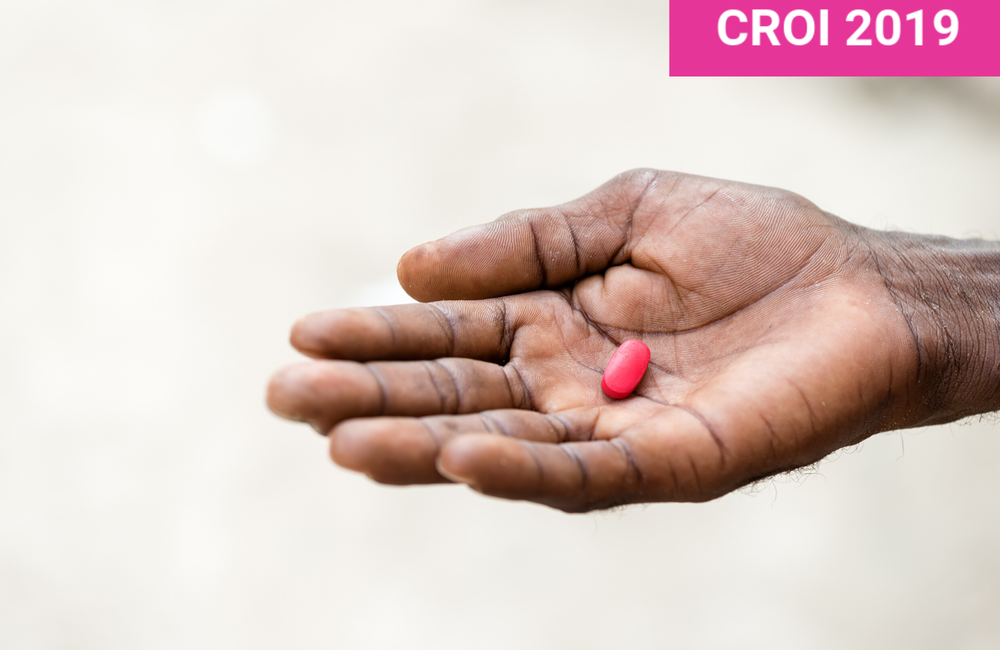
As well as the important findings of PopART, the largest HIV prevention trial ever conducted, this week’s Conference on Retroviruses and Opportunistic Infections (CROI) in Seattle heard about several other studies from African countries which have scaled up universal testing and universal treatment.
The studies showed the multiple benefits of these interventions.
Allow prompt initiation of HIV treatment
Guideline changes are not always rapidly implemented in practice. But the World Health Organization’s recommendation of a ‘treat all’ approach in late 2015 appears to have had a real impact on the speed with which people start to take treatment in several African countries.
An analysis of the medical records of 814,603 people enrolled for HIV care in six countries over several years looked at how many people initiated treatment within 30 days of being enrolled at that clinic (not necessarily the time of their first HIV diagnosis). This is likely to have long-term benefits for the health of the individuals taking treatment.
The greatest increase in rapid antretroviral therapy (ART) initiation was seen in Rwanda – whereas 44% of people enrolling in HIV care just before the change in guidelines started treatment promptly, this jumped to 79% among those enrolling just afterwards, and the figures have continued to improve since then. Similarly impressive increases were seen in Kenya (55% to 81%), Burundi (56% to 73%) and Malawi (69% to 81%).
Since the guideline change, an individual’s CD4 cell count has made little difference to their chance of starting ART promptly. The researchers say that they found no evidence that the most immunosuppressed patients are being ‘crowded out’ by patients with less advanced disease.
Lower HIV incidence
The most important study examining whether test and treat approaches have an impact on new HIV infections was the large randomised trial, PopART. But the conference also heard observational data on this issue from Mozambique.
Since 2014, lay counsellors have been visiting households in the rural district of Chokwe annually. As well as offering HIV testing, they provide up to five follow-up sessions with people with HIV, to support them with psychosocial issues, linkage to HIV care and taking ART. Health facilities offering ART have also been improved, multi-month prescriptions are available, and more lay counsellors are available to support patients.
Surveys of random samples of the population show that between 2014 and 2017, the proportion of people with HIV who knew their status has gone up from 67% to 88%, the proportion of those taking ART has increased from 60% to 79% and the prevalence of viral suppression has risen from 41% to 66%.
HIV prevalence appears to be stable or even falling slightly (27.8% to 25.6%, a difference that is not statistically significant).
Incidence was calculated to be 1.9% per year in the first survey, halving to 0.9% in the most recent survey (incident rate ratio 0.46, 95% confidence interval 0.22-0.94).
Reduce mortality
SEARCH ramped up HIV testing within multi-disease screening campaigns, supported linkage to care and provided HIV treatment regardless of CD4 cell count in Uganda and Kenya. The randomised study compared this to usual services.
There was an overall benefit on mortality. Focusing on those who were HIV positive at the beginning of the study and tracking deaths that occurred in the three years that followed, mortality was 3% in intervention communities and 4% in control arm communities (a 21% reduction, p = 0.02).
The benefit was especially pronounced among men who had a CD4 cell count below 350 cells/mm3 at the study’s baseline. Six per cent died in the intervention communities, compared to 10% in the control communities, a 39% reduction (p = 0.01).
The intervention appears to have been particularly effective at identifying and linking to care men with low CD4 counts who were previously out of care – a group who are at high risk of premature death. In control communities, being male and not taking HIV treatment at baseline were risk factors for death. In the intervention communities, this was no longer the case.
Nash D et al. “Treat All” adoption improves rapid treatment initiation in 6 sub-Saharan countries. Conference on Retroviruses and Opportunistic Infections, Seattle, abstract 1016, 2019.
View the abstract on the conference website.
MacKellar DA et al. Fifty-percent reduction in HIV incidence in Chokwe district, Mozambique, 2014-2017. Conference on Retroviruses and Opportunistic Infections, Seattle, abstract 98, 2019.
View the abstract on the conference website.
Watch the webcast of this session on the conference website.
Kamya MR et al. SEARCH intervention reduces mortality at a population level in men with low CD4 count. Conference on Retroviruses and Opportunistic Infections, Seattle, abstract 138, 2019.
View the abstract on the conference website.
Watch the webcast of this session on the conference website.
